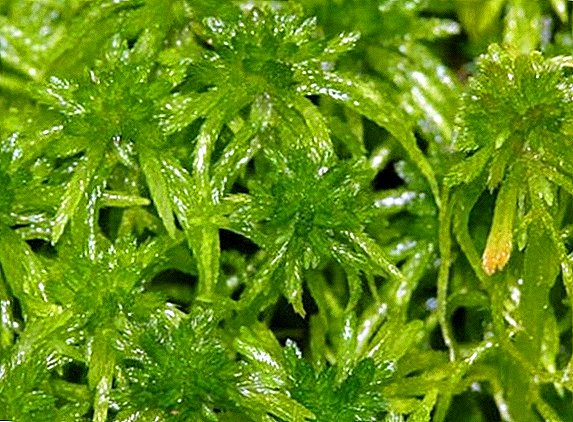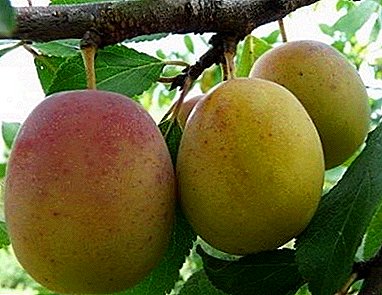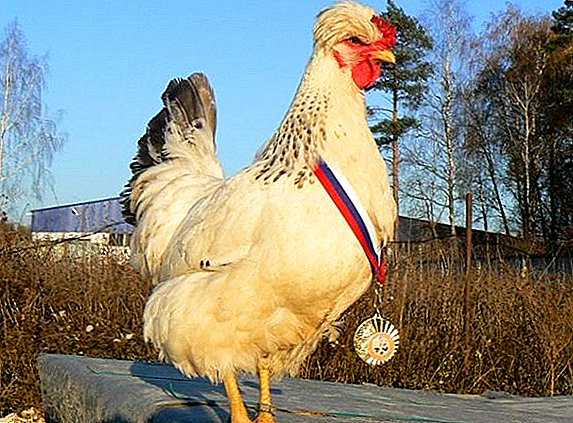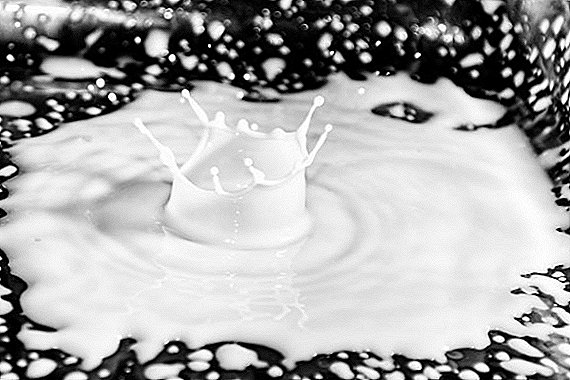 Getting in the conditions of any farm milk of the highest grade is one of the important conditions that affect the profitability of production. Requirements for the procurement of this product are set by state standards and must be complied with by all farms. From this it is clear that even small farms must strictly adhere to all the rules for the primary processing of milk.
Getting in the conditions of any farm milk of the highest grade is one of the important conditions that affect the profitability of production. Requirements for the procurement of this product are set by state standards and must be complied with by all farms. From this it is clear that even small farms must strictly adhere to all the rules for the primary processing of milk.
Primary milk processing
Primary processing consists of purification from mechanical impurities, cooling to the desired temperature, storage and transportation to a milk processing plant. Consider all these points in more detail.
Did you know? Evenki, the indigenous people of Eastern Siberia, have used reindeer milk both for food and for ceremonial purposes.
Cleaning
Even with the most careful observance of sanitary and hygienic rules, mechanical impurities may be present in fresh milk, therefore cleaning must be carried out without fail. It can be carried out using filtration or centrifugal action.
On small farms, the drink is filtered by hand, by means of a transfusion from the container into the container through several layers of gauze fabrics, which are fixed between metal grids made of stainless steel food. 
For high-quality filtration of 1 ton of milk you need to use 1.3 meters of gauze. You can clean the gauze with ordinary detergents in a washing machine. The service life of this filter is not more than 10 days.
The next method of cleaning on large farms is the use of special filters, for example, F-01M, which uses an element for filtering long-term use. The two-step cleaning process:
- stainless steel mesh;
- quartz sand granules.
Find out what is useful and harmful cow's milk.
Cleaning of the filtering material is carried out by reverse flow of the liquid using detergents.
The centrifugal method is based on the use of milk separators, in which the separation of milk and mechanical impurities that remain on the walls of the drum occurs. Despite the high cost, this method is more effective.
Cooling
During processing, the main place is occupied by cooling, which allows you to maintain the bactericidal qualities of milk. However, such manipulations should be carried out as soon as possible after milking, the maximum time interval between these processes should not exceed 72 hours. 
Most often, the milk drink is cooled to a temperature of +3 ° C. In this state, the growth of microorganisms is completely stopped, which allows to preserve the quality of the product for much longer.
On large farms, cooling tanks are used, which can hold up to 2 tons of milk drink. They are autonomous refrigeration units, which are fully thermally insulated and equipped with devices for continuous mixing of the mechanical type.
Smaller farms use reservoirs of prostate cancer with a capacity from 100 liters to 1 ton. They have three-wall insulation with a water jacket and mechanical agitation. Cooling occurs within 2 hours to the desired level - 2 ° C.
The simplest method of cooling is to immerse the beverage containers in tanks in which there is ice water.
Familiarize yourself with the types and characteristics of milk coolers.
Storage
Storage is an important process in the primary processing of milk. In large farms, tanks are used, which are part of the cooling structure and constitute closed, non-heated containers. 
It is possible to store milk in a small amount in the pool where cooling was carried out. It is important to open the lid, however, to prevent contaminants from entering the beverage, use gauze.
Did you know? For countries in the East, camel milk is a familiar product. It is used to make cheeses, ice cream, and in the UAE it is included in the menu of kindergartens and schools.
Milk processing methods
Today, the processing of milk is carried out in the following ways:
- mechanical;
- thermal.
Mechanical
Mechanical processing is an integral part of the complex technological cycle of milk processing. It consists in the mechanical action on the milk drink in order to divide it into fractions, increase the homogeneity and homogeneity of the fatty phase, and also prepare to obtain the same ratio of the mass fraction of fat and dry substances. 
Milk separation
The separation process is the separation of milk in a rotator separator into high-fat and low-fat products. The fat globules are pushed toward the center, where they are deposited on the outer surface and are collected in the form of cream, and the fat-free drink is lowered.
Familiarize yourself with the types and principles of operation of milk separators.The effectiveness of the process depends on:
- separation temperatures;
- drum speed;
- separator performance;
- acidity of the liquid;
- pollution;
- the size and density of fat globules;
- pretreatment;
- mass fraction of fat;
- density and viscosity.
Important! To improve the separation process by 2 times, it is recommended to heat the milk to about 45 ° C. A higher temperature will increase the degree of crushing of the fat globules and, as a result, the fat yield will deteriorate.
During normal separation, you can get cream with a fat content of 55%.
How to separate milk at home: video
Homogenization
Homogenization is the process of complete destruction of fat globules with a diameter of more than 140 nm and partially of protein substances. The purpose of this method of treatment is to prevent spontaneous exfoliation of fat and preserve the homogeneity of the product without any delamination.
Correctly performed homogenization:
- increases the shelf life of dairy products;
- regulates structural and mechanical qualities;
- improves the taste of the product.
Find out what the composition of cow's milk.High pressure valve homogenizers are very popular, which create maximum effect. The effectiveness of homogenization depends on the following factors:
- temperatures;
- qualities and composition of the drink;
- pressure.
- single stage;
- two-step.
 Sour milk is a simple example of a non-homogenized dairy product;
Sour milk is a simple example of a non-homogenized dairy product;
In order not to decrease the effectiveness of this method, you need to make sure that the acidity in the drink does not increase, because in this state there is a decrease in protein stability and the formation of protein agglomerates and, as a result, difficulty in crushing fat globules.
Thermal (thermal)
Today in the production of dairy products use these types of heat treatment:
- pasteurization;
- thermalization;
- heating;
- sterilization.
Find out what fat content and density of cow's milk mean.
Pasteurization
The essence of pasteurization - keeping the milk for a considerable time at a certain temperature, is of two types:
- Low-temperature, when the degree of heating does not exceed 76 ° C;
- High-temperature, when the temperature can reach a level of 100 ° C.
How to pasteurize milk at home: video
Important! As a result of pasteurization, milk cannot be stored for a long time. In the refrigerator, its shelf life is a couple of days, and at room temperature - only a few hours.
Thermalization
Thermalization is a process with a treatment that is carried out at a temperature of 65 ° C. The exposure duration is 30 seconds. This time is enough, but the alkaline phosphatase activity is retained in the drink. Such actions are carried out for the death of psychrotrophic microflora, which can have a negative impact in the subsequent production of cheeses.
Also, this process contributes to the weakening of the spore-forming microflora, the “work” of which leads to the appearance of defects in the cheese during its maturation. However, thermalization does not completely destroy the harmful microflora, so the milk drink needs pasteurisation in the optimal mode.

Heating
Heating is the process of holding the milk, which is carried out at a temperature of up to 100 ° C for 3 hours, and at a temperature of 105 ° C for 15 minutes.
In this mode, the following changes occur in the structure of the product:
- whey proteins are denatured;
- vitamins are destroyed;
- increases the mass fraction of fat;
- evaporated part of the water.
Find out why milk from a cow becomes bitter.As a result, the biological value of milk decreases, but it acquires a nutty taste and smell, as well as a cream or light brown shade.
Milk heating at home: video
Sterilization
Sterilization is carried out at a temperature of more than 100 ° C - milk is kept in this mode for about half an hour. After the drink becomes completely sterile, it loses most of the nutrients, but gets a good shelf life.
The sterilization process includes two schemes:
- Single Stage. In this method, heat treatment is carried out 1 time. The liquid is treated with steam with a temperature of 140 ° C. The exposure lasts a few seconds, then the drink is sent to a vacuum chamber, from where it is bottled in sterile packaging.
- Two stage. Provides deeper sterility. It is divided into preliminary and repeated sterilization.
Important! Long sterilization leads to the destruction of almost all the vitamins present in the fresh dairy product. Fats are partially hydrolyzed, giving the drink a pleasant taste and smell.
Sterilization destroys all bacteria and microbes, after such processing milk can be stored for about 6 months. 
Milk processing products
Milk processing produces products that contain a complex of biologically active substances with minimal energy and a low content of fat and sugar.
Learn how to determine the water in milk.
Buttermilk
Buttermilk is a low-fat cream, which is a by-product in the manufacture of butter.
The properties of this product depend on:
- fat and acidity cream;
- temperature treatment conditions.
Buttermilk improves the protective functions of the body, helps the liver to eliminate toxins. In addition, it normalizes the activity of the intestines, stomach, has a beneficial effect on the heart, teeth and even bones. 
Serum
Whey is obtained by the production of cheese, cottage cheese, casein and milk protein. Its mass reaches 80% of the mass of the original product.
The serum contains all the water-soluble vitamins, it can be used both for direct consumption and for the production of various products:
- whey kvass;
- acidophilus yeast drink;
- in baking;
- for the manufacture of food additives.
Did you know? Previously, in order to preserve milk in its original state for a long time, a toad was placed in it.
The composition is rich in various vitamins, calcium, as well as valuable minerals of phosphorus and magnesium. In addition, more than 200 names of biologically active substances are present in the serum, which favorably affect the activities of all systems and organs of the human body. 
Kefir
Kefir is a double-fermented fermented milk drink. Prepare kefir by souring milk or sourdough kefir fungi. Sourdough is a symbiosis of a large number of microorganisms, lactic acid sticks, acetic acid bacteria and yeast.
Natural starter is prepared as follows:
- fungi washed with warm water;
- placed in a glass jar;
- poured boiled and then cooled to 20 ° C milk drink. The proportion should be as follows: 1 g of fungi - 80 g of milk.
- after it is filtered through a sieve;
- fungi are washed and again poured the same amount of milk drink;
- after a day in the refrigerator, the resulting drink becomes a yeast for sour cream.
Find out why cow milk emits a foul odor.Kefir is prepared as follows:
- Milk is boiled and cooled to 25 ° C.
- Pour into clean dishes.
- Make a leaven in the amount of 3 teaspoons per 250 ml of milk.
- After the appearance of a clot, the drink is cooled to 10 ° C.
- Leave for 3 days.
- Enjoy the natural product.
Koumiss
Kumis is an ancient fermented milk product. Previously, it was produced from mares' milk and was called a drink for warriors, today it is also successfully made from skimmed cow milk. Koumiss is a bluish-tinged liquid with a sweet-tart taste.
The modern cooking process is divided into two parts, so that the product does not quickly exfoliate and has a more attractive appearance:
- First, lactic acid fermentation is carried out, resulting in yogurt.
- After the addition of yeast, kumiss is obtained by alcoholic fermentation.
Learn the benefits of milk with garlic, milk with cinnamon.
You can check the naturalness of the drink with the help of usual agitation, after which it acquires a uniform foaming consistency. As research experience shows, in the process of maturation, the formation of special enzymes, which are distinguished by high bactericidal properties, occurs.
Video: how to cook koumiss at home Koumiss is used to treat problems with the lungs, heart, stomach, as well as with beriberi, metabolic disorders, neuroses and even neurasthenia.
As you can see, the occupation of the dairy business is a rather troublesome process, but if you follow all the standards of processing, you can get not only good profits, but also milk, as well as secondary products of high quality processing.












